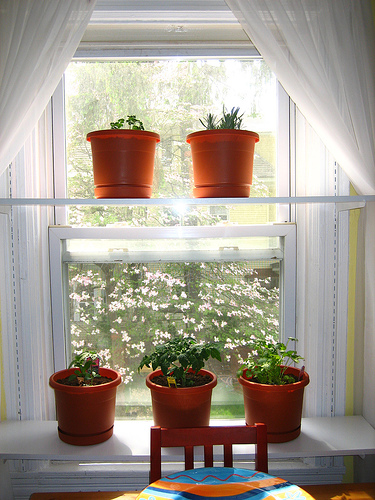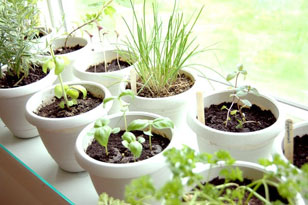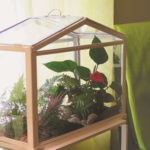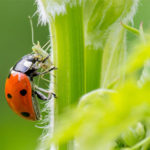Growing Tasty Herbs Indoors
Every year in the middle of winter, I begin to think longingly of the bunches of fragrant basil I harvested the past summer. This sweet herb, along with others like tarragon and thyme, don’t grow outside during cold months of the year in most areas, but they can be grown indoors. Better yet, growing them inside puts them right where you need them and using shelves can allow you to grow herbs in the kitchen, even if you have a small kitchen design. Not only do they make a tasty addition to meals, herbs are also attractive houseplants.
Two Types of Herbs for Indoors
There are two categories of herbs for indoor growing. Some prefer a warm, sunny location, while others require less light and moister conditions. Most herbs grow well in a bright location, such as a western, eastern or southern window. Or, if light is scarce in your home, you can invest in an artificial lighting system. I have had great luck with the Aerogarden in my dining room where I have a northern exposure. At the moment I’m growing and enjoying salad basil, purple basil, parsley, dill and chives.
Proper Lighting for Indoor Herbs
Without sufficient light, herbs become spindly and weak. Too much light, on the other hand, can cause problems. Southern windows tend to get very hot at certain times of the year. Watch for leaf burn and move plants away from the window if necessary.
Herbs that like bright light include basil, bay laurel tree, chives, sweet marjoram, oregano, rosemary, sage, French tarragon and thyme.


Herbs requiring a little less light include cilantro, mint and parsley. These can be placed 3 to 5 feet from a sunny window and should be kept moist.
Increase your chances of indoor herb gardening by keeping the following tips in mind:
- Choose healthy herbs with full, bushy growth. Avoid root-bound plants. Look for smaller-leaved, more compact varieties, which tend to do best indoors.
- Plant herbs separately. If disease strikes one plant, you can quickly and easily remove it before the problem hits all of the others. Individual pots can be placed within a larger container, such as a window box. Herbs also look stunning planted in a strawberry jar.
- Make sure herbs have adequate air circulation, or the plants will be susceptible to pest infestation. In stuffy rooms open a window for part of the day, or use a fan.
- Pinch herbs regularly to keep them bushy, compact and healthy. Always remove blooms from annual herbs like basil, because flowering will negatively affect leaf production and can change the flavor of the herb.
- Never pinch back perennial herbs more than halfway, because this can send the plant into shock, which can be fatal.
- Ensure even, healthy growth by turning herbs once a week so that all sides of the plant receive sufficient light.
- Fertilize monthly with a balanced organic fertilizer. Lack of food will lead to spindly, weak plants with little foliage.
- Replace weak or leggy plants with new, compact herbs.





